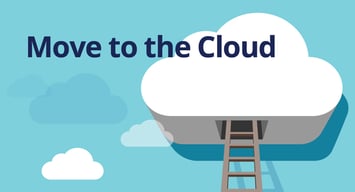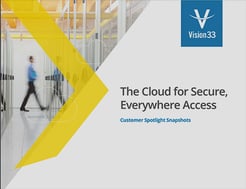Cloud Hosting Solutions for SAP Business One
-
What Is Cloud ERP?
-
Comprehensive Hosting Solutions
-
Vision33 Hosting Packages
-
Migrating from On-Premises to Cloud
-
The Vision33 Advantage
-
Technology Partners
-
Cloud Success Stories
-
Other Cloud ERP Solutions
-
Resources
What Is Cloud-Hosted ERP?
Cloud-hosted ERP is enterprise resource planning (ERP) software that runs on a vendor's cloud platform versus an on-premises network. It is accessible from any device with a web browser.
Most companies choose cloud-hosted over on-premises deployments because it is affordable, low maintenance, and more secure.
Vision33's comprehensive cloud hosting solutions are a powerful combination of technologies and services to protect, optimize, and support your SAP Business One solution.
We take care of everything so you can focus on running your business.
World-class architecture
Your Business One solution is fully supported by a rich suite of Tier 1 technologies and premium services.
Fully managed
We take care of everything from patching to system health and security monitoring.
Affordably priced
Designed and priced for small and midsized companies. No hidden costs or complex à la carte price lists.
Robust solution portfolio
Do more with SAP Business One by extending its core capabilities and integrating it with partner solutions.
24/7 support
Training, unlimited support tickets, and around the clock support from the moment your solution deploys.
Ironclad security
World-class technologies and services unite to optimize performance and protect your business from downtime and data loss.
Vision33 Hosting Packages
Public Cloud
for SAP Business One
Annual ERP & infrastructure upgradesPerformance guarantee
Single sign-on
Private Cloud
for SAP Business One
Highly customizable solutionInfrastructure upgrades (every 3 years)
Performance guarantee
All packages include:
HostingMulti-factor authentication
24/7 system health monitoring
24/7 security monitoring
24/7 support with unlimited support tickets
Daily backups
OS patching & system maintenance
Password management
Migrating from On-Premises to Cloud

Vision33 has migrated hundreds of on-premises SAP Business One deployments to the cloud. Our time-tested methodology ensures a successful migration and quick time-to-value.
The Vision33 Advantage
450+ small and midsized companies trust Vision33 to manage their cloud-hosted SAP Business One environment every day.
The first partner to deploy SAP Business One to the cloud
30+ years of SAP Business One experience
Extensive multi-disciplinary knowledge
Expansive technology resources
Vision33 was the first SAP Business One partner recognized by Amazon Web Services (AWS) for technical proficiency in implementing, migrating, monitoring, and maintaining SAP Business One on the AWS cloud.*
*AWS SAP Business One Competency badge
Technology Partners
These technology partnerships strengthen Vision33’s hosting solutions.
 |
 |
 |
 |
Cloud Success Stories
Explore Other Cloud ERP Solutions
Resources
Why cloud-hosted technologies are the most secure options on the market.
Frequently Asked Questions (FAQs)
-
How is data stored and secured in a cloud-hosted ERP solution?
Data can be stored in a multi-tenant environment or a dedicated environment (aka single-tenant environment). Both are secure data storage and processing environments. Cloud data centers are secured with advanced physical security measures, such as biometric access controls and 24/7 monitoring. Cloud providers also have advanced network security to prevent unauthorized access. World-class technologies and services unite to optimize performance and protect your business from downtime and data loss.
-
Can cloud-hosted ERP solutions be customized to meet my business’s needs?
Yes. Vision33's cloud ERP experts will work with you to understand your requirements and determine the best approach for your business.
-
How is maintenance handled in a cloud-hosted solution for SAP Business One?
The best thing about cloud ERP is knowing your software environment is being managed by someone else. Annual ERP upgrades, monthly operating system (OS) updates, around-the-clock monitoring, support, and unlimited support tickets are included with your subscription.







